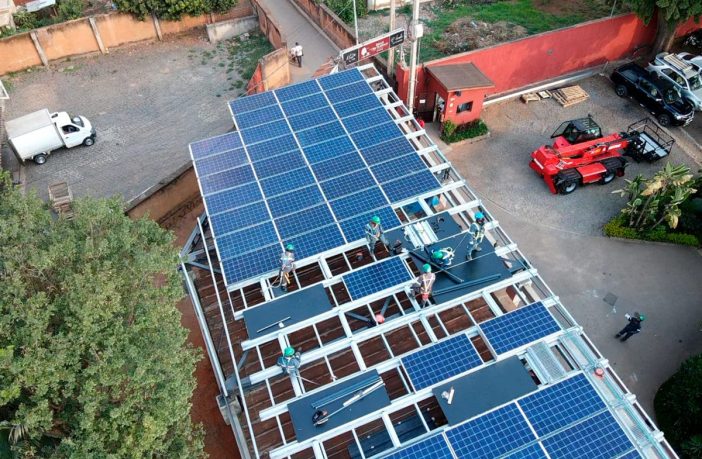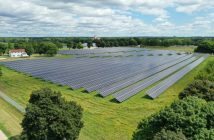Opinion
- The Commercial and Industrial (C&I) solar sector currently accounts for 75% of power demand in Sub-Saharan Africa.
- However, due to the unreliable nature of energy supply from the grid, consumers under this segment have been forced to invest in alternative sources of energy, which they consider to be more reliable and less expensive, such as the use of captive solar solutions.
Some of the reasons why the C&I consumer segment has tapped into captive solar solutions (energy for its own consumption) include:
- To reduce electricity costs: Grid tariffs are often high in Sub-Saharan Africa, even for C&I customers, mainly due to the high cost of importing fuels, high losses in the Transmission & Distribution network as well as the use of costly emergency diesel plants. This has resulted in high electricity costs for the C&I consumer segment which on average consumes more than 100kWh every month. In a bid to reduce this cost and improve bottom lines, several C&I customers have invested in captive solar solutions, which is believed to provide a cheaper source of power. In 2018, BloombergNEF estimated that the average price for a 250-kW solar captive project was between US$0.10 – 0.14/ kWh vs. more than $0.25/kWh in countries such as Ghana for commercial customers connected to the grid.
- To improve power supply: The vast majority of firms in Sub-Saharan Africa suffer from intermittent electricity supply due to load shedding. A solar captive solution combined with battery storage is considered reliable and a good back-up solution.
- To replace existing off-grid generation sources: Many C&I customers are looking to replace their gensets by decarbonized generation sources for both economic and environmental reasons.
The mining sector has utilized large off-grid captive solutions for many years. Indeed, a mine needs several MW to run its operations, but it must be differentiated from current projects related to small to medium enterprises (SMEs), shopping malls or the agricultural industry. The size of these projects ranges between a few hundred kilowatts to a few megawatts.
The objective is to be below the capacity limit that requires a specific legal framework, which facilitates a project’s development. For example, in Kenya, the Energy Act 2019 enables power producers below 1 MW to sell energy without following the stringent licensing process.
Before providing an overview of the different stakeholder profiles, it is important to describe the two main implementation models.
- Direct purchase: The consumer buys, owns and sometimes operates the solar system, which is typically installed by an EPC contractor. The consumer finances the installation through its balance-sheet financing.
- Energy Service Company (“ESCO”) based on a Power Purchase Agreement (PPA): The consumer buys power from the ESCO, a Special Purpose Vehicle (“SPV”), at a price per kWh for a certain period based on the offtake. In this model, the ESCO takes the financial and technical risk, but investors can create more value by implementing a portfolio of projects with stable long-term cash flows.
Even if the direct purchase model is still dominant, the ESCO model is increasingly present through the investment of various new stakeholders specialized in project finance that identify the C&I sector as a priority.
- Pure player of the solar captive solutions: Mainly local EPC and O&M contractors but they also want to capitalize on their track record to develop an ESCO model with financing partners.
- Players from the solar utility-scale sector: Both technical and financial stakeholders that are looking for projects with faster licensing processes and higher profitability.
- Players from the solar off-grid sector or rural electrificationthat are looking to leverage their hybrid solar systems’ expertise on more bankable projects and with faster licensing processes.
This range of stakeholders highlights two important motivations about the current sector trends:
- Compared to rural electrification projects or other off-grid solutions, the clients are bankable. Indeed, if they can pay their electricity bills every month to the national offtaker, they can pay the ESCO. Therefore, the risk of demand is much lower.
- Compared to utility-scale projects, development is much faster. As explained, most of these projects are below the capacity limit that requires a strict licensing process in many countries. The small size of the project also implies lighter technical and E&S studies.
However, despite the growing investments in captive solar solutions, the sector continues to face several challenges that hinder its development. They include:
- Operating challenges: The two implementation models imply that a lot of projects must be sourced for the business to grow but each project must be tailor-made to size the system and match the potential demand. Therefore, a C&I company needs to combine technical skills with a good network in the economic environment of the country.
- Regulatory challenges: As the energy markets are still at an early stage in the region, the multiplication of small C&I projects has an impact on the financial statements of the national utilities. The authorities can modify the self-consumption scheme, forbid net metering schemes, or require various licences.
- Financing challenges: As with the other segments of the energy sector, the lack of financing is one of the main issues in Sub-Saharan Africa. The access to debt financing, local or international, is difficult because of the small size of the projects, the international criteria, or the debt cost. Most of the projects are 100% financed by developer equity and investors need to develop a portfolio of projects before refinancing. This situation creates an opportunity for specific financing instruments, such as bridge financing or facilities offered by DFIs.
For countries in Sub-Saharan Africa to be industrialized and attain economic prosperity, there is a need for C&I consumers to have access to cheap and reliable power. As such, it is imperative for the governments to (i) implement an operating and legal framework to do so; and (ii) put in place favourable policies and incentives that encourage private sector investment in captive solar solutions.
Author: Jean-Jacques Ngono – Managing Partner Africa, FInergreen
This article was originally published in pv magazine and is republished with permission.
Disclaimer: The articles expressed in this publication are those of the authors. They do not purport to reflect the opinions or views of Green Building Africa or pv magazine, our staff or our advertisers. The designations employed in this publication and the presentation of material therein do not imply the expression of any opinion whatsoever on the part Green Building Africa concerning the legal status of any country, area or territory or of its authorities.











